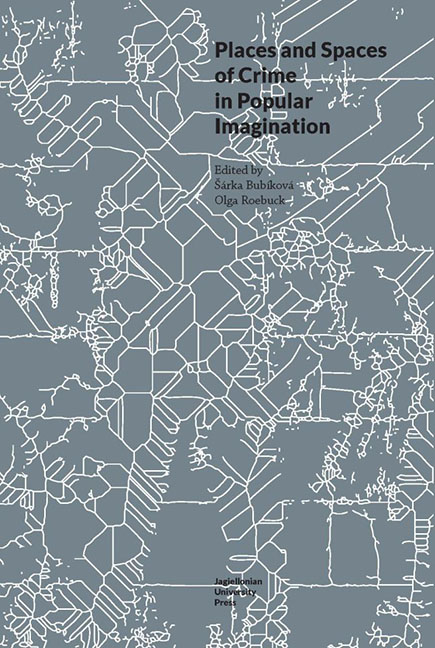Book contents
- Frontmatter
- Contents
- Introduction
- London in the Cormoran Strike Series
- London as the Murderer’s Playground in Sharon Bolton’s Now You See Me
- Through the Looking-Glass: Space and Place in Simon Mawer’s The Girl Who Fell from the Sky
- Murderous Academics: Territoriality in Cynthia Kuhn’s Academic Mysteries
- Suburbia and the Subversion of Its Values in 1950s Crime Comics
- Wilderness in Dana Stabenow’s and Nevada Barr’s Crime Fiction Series
- “I Am the Wave that Sinks into the Ocean”: The Sense of Place in The Affair
- Index
- Notes on the Contributors
Introduction
Published online by Cambridge University Press: 13 October 2023
- Frontmatter
- Contents
- Introduction
- London in the Cormoran Strike Series
- London as the Murderer’s Playground in Sharon Bolton’s Now You See Me
- Through the Looking-Glass: Space and Place in Simon Mawer’s The Girl Who Fell from the Sky
- Murderous Academics: Territoriality in Cynthia Kuhn’s Academic Mysteries
- Suburbia and the Subversion of Its Values in 1950s Crime Comics
- Wilderness in Dana Stabenow’s and Nevada Barr’s Crime Fiction Series
- “I Am the Wave that Sinks into the Ocean”: The Sense of Place in The Affair
- Index
- Notes on the Contributors
Summary
The present volume brings together essays discussing the role of place and space connected to crime in popular genres in English, namely, in crime fiction, spy novel, crime comics and crime film. The book thus provides a study of a specific theme and its rendering in popular genres, a still rather under-researched field.
Genre literature, including crime fiction, traditionally overlooked by literary critics, found its way into the mainstream of literary scholarship in the 1980s. Yet there still are critical aspects, which have been mostly explored in the mainstream, leaving a void for the popular genres. This concerns, among others, the place and space of crime in crime fiction and related genres, even though it offers a rich field of research. Impacted by the British understanding of cultural studies and American politics of (ethnic) identity, the turn from the early focus on the “whodunit” in crime fiction to a more socially engaged writing allowed for far greater explorations and ensuing literary representations of the place and the local community in which crime happens and is investigated. This “spatial turn,” manifested in an increased emphasis on the location of crime, not necessarily in the sense of the crime scene itself, but as a socio-geographical place and space, is the main focus of the volume.
Crime happens among people and therefore analyzing places of crime cannot overlook their social dimension, that is, how the places are peopled. As crime fiction scholar George J. Demko asserts, in crime fiction “the place is critical because it is the milieu or context thrown into disorder” and he further explains that “the physical setting, type of legal system, types of people involved, the accessibility of the place of the crime” are “important in order to understand what is transpiring” (Demko 2007a, italics in the original). He also points out that the settings of crime “act as […] windows into particular cultures, local mores, dialects etc.” (Demko 2007b, italics in the original). Therefore, when studying places of crime we approach the topic not merely from the point of view of literary theory but rather from the perspective of cultural studies, always engaging not only with the literary quality of the place but with its historical and sociological dimensions as well.
- Type
- Chapter
- Information
- Places and Spaces of Crime in Popular Imagination , pp. 7 - 12Publisher: Jagiellonian University PressPrint publication year: 2021



